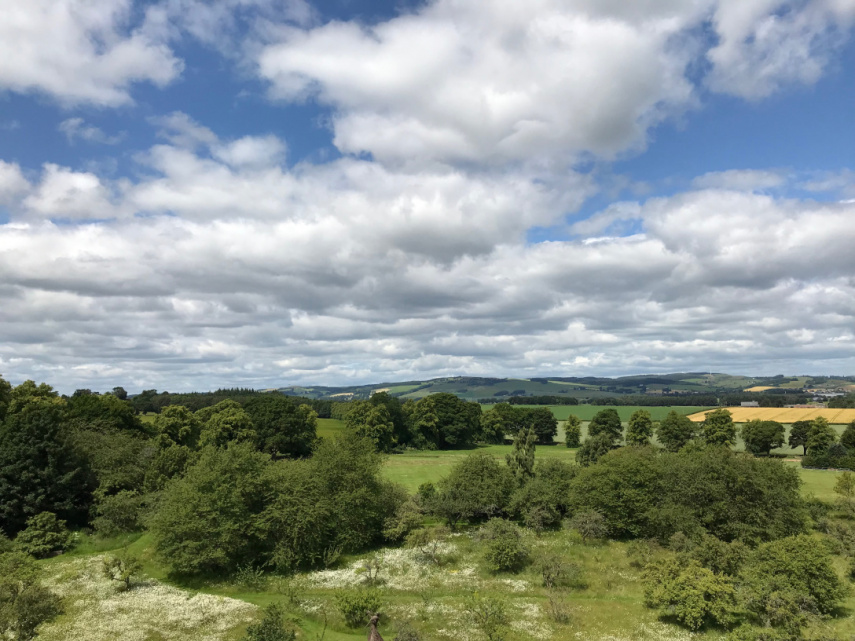
Self-Assessment can help identify new opportunities for land use and management
Emma Cooper
In this blog, Head of Land Rights and Responsibilities, Emma Cooper looks at the Commission’s Land Rights and Responsibilities Self-Assessment programme and what we have learnt from the process.
The Land Rights and Responsibilities Self-Assessment Pilot Programme in 2020-2021 explored the effectiveness and workability of a voluntary review process of self-assessment against the Scottish Land Rights and Responsibilities Statement (LRRS) for land owners and managers across a range of sectors. It also aimed to improve our understanding of how the LRRS works in practice.
In March 2019, the Commission reported on its investigation into the issues associated with scale and concentration of land ownership. The investigation identified that issues associated with large-scale and concentrated rural land ownership in Scotland directly impact economic and social wellbeing. A key recommendation in the report was for land owners to undertake a voluntary review process of self-assessment against the LRRS principles:
“We recommend land owners review the operation and governance of their land holdings to optimise opportunities using the principles of the Land Rights and Responsibilities Framework.” (Review of Scale and Concentration of Land: Report to Ministers)
Working directly with land owners and partners Scottish Land & Estates, Community Land Scotland and NFU Scotland, 31 pilot self-assessments were delivered. Land owners and managers operating in different contexts volunteered to participate and provided valuable feedback on both the process and how the LRRS is delivered in practice. An overview report is available here as well as the individual reports from each cohort.
The approach has outlined some of the benefits and challenges involved with a voluntary self-assessment process. All land owners demonstrated a wide range of good practice and were able to identify how they aligned with the principles of the LRRS. And a majority of land owners identified reasonable actions they could take to further align with the LRRS. A number of improvements to the format and process were identified that would make the self-assessment more accessible and useful.
The programme has also brought into focus why a land owner may choose to engage in assessing their land practices. Importantly, a self-assessment can provide a personal benchmark for the land owner themselves. It is not intended to be an externally judged process. Instead, it should equip landowners and managers with a tool to periodically check in on their practices in relation to the LRRS. A self-assessment can inform the thinking and actions of land owners who want to make sure that they are exercising their land rights responsibly. The pilot process helped those who took part to realise that they were already engaged in a lot of good practice in relation to the LRRS principles.
Importantly, a self-assessment can help to identify new opportunities for land use and management, leading to creative solutions or sparking ideas that haven’t previously been considered. It can provide reassurance for the land owner’s stakeholders that they are operating within a recognised definition of responsible practice, and accountability. For some land owners, a self-assessment is important to identify actions needed to meet Corporate Social Responsibility goals and Environmental, Social and Governance criteria.
The Commission’s Good Practice Programme provides a range of guidance and support for land owners which will continue to evolve in response to feedback and learning. As part of this programme we see considerable value in continuing to develop a self-assessment process that is accessible and workable for land owners and managers. We will use the learnings from the pilot process as the springboard for this.
Fundamentally, it is important to recognise the importance of established approaches to land management. However, it is equally important to incorporate new, innovative approaches that can provide wider benefits without impeding on a land owner’s ownership rights or day-to-day practices. The LRRS self-assessment process can support land owners and managers to take a different look at their practices and deliver both public and private benefits from land use and ownership.
Over the next few weeks we will have guest blogs from Scottish Land & Estates, Community Land Scotland and NFUS looking at what their members have learnt from the self-assessment programme.
If you would like to find out more about the self-assessment process, please get in touch with the Good Practice team on goodpractice@landcommission.gov.scot.
